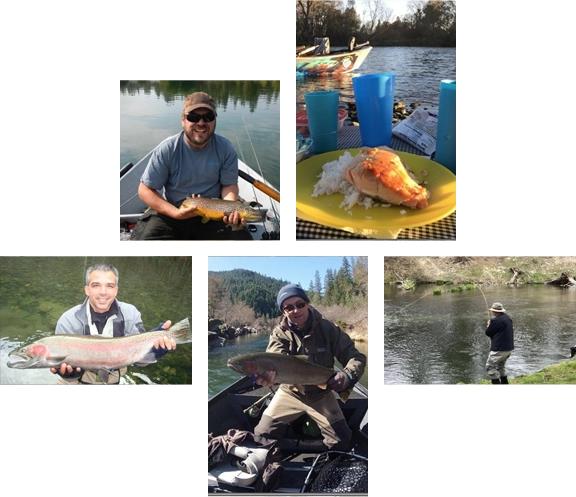Puerto Rico
Puerto Rico Fly Fishing Guides
SAN JUAN FLY FISHING - CANGREJOS YACHT CLUB MARINA, SAN JUAN PUERTO RICO
Puerto Rico is fly fishing better they say after the recent hurricanes many oceans species thrown off course from their normal migrations is benefiting Puerto Rico's fly fishing. You can count on us making sure your fly fishing day trips in Puerto Rico are a total success. We have the best fly fishing gear, boats and locations, if you like catching tarpon on fly rods you found the right outfitter.
We fly fish 9 to 12 weight fly rods on Torrecilla Lagoonas and San Jose Lagoonas which we access by boat via the ocean. Rain is good as it adds oxygen to the Lagoons and tarpon get active on the fly. Let us be your partner as we chase the silver ghost of the ocean, there's nothing like landing tarpon on huge fly rods and we can provide it all for a great price.
Puerto Rico Fly Fishing Day Trip Prices
- 4 Hours - $550 USD Two Angler
- All fly gear included, flies and lunch.
- We accept Paypal and all major credit cards.
The Keep In Minds
- * Week Days are best
- * Busy January to May - Very Busy February & March
- * We ask that you confirm your trip the day before due to weather conditions
- * Deposit refunded if there is a cancellation due to weather
- * Rain is Good
- * Beginner to advanced welcome
We can make your fly fishing dreams come true in San Juan, Puerto Rico
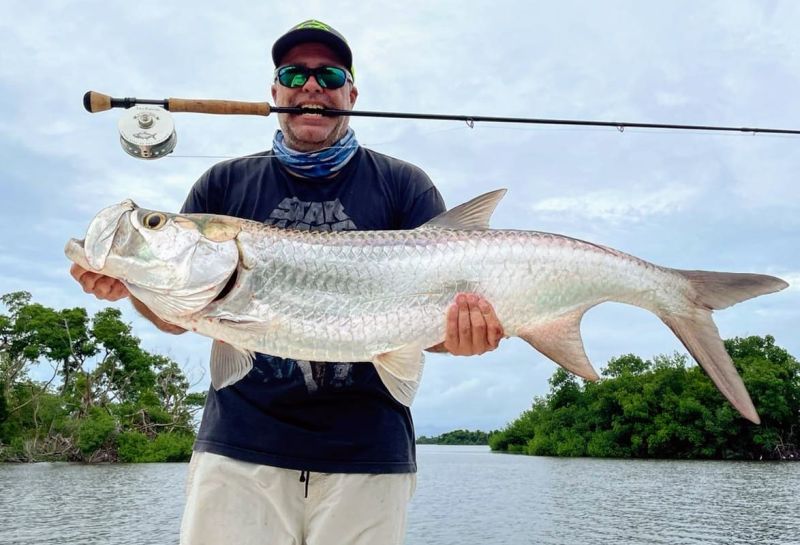
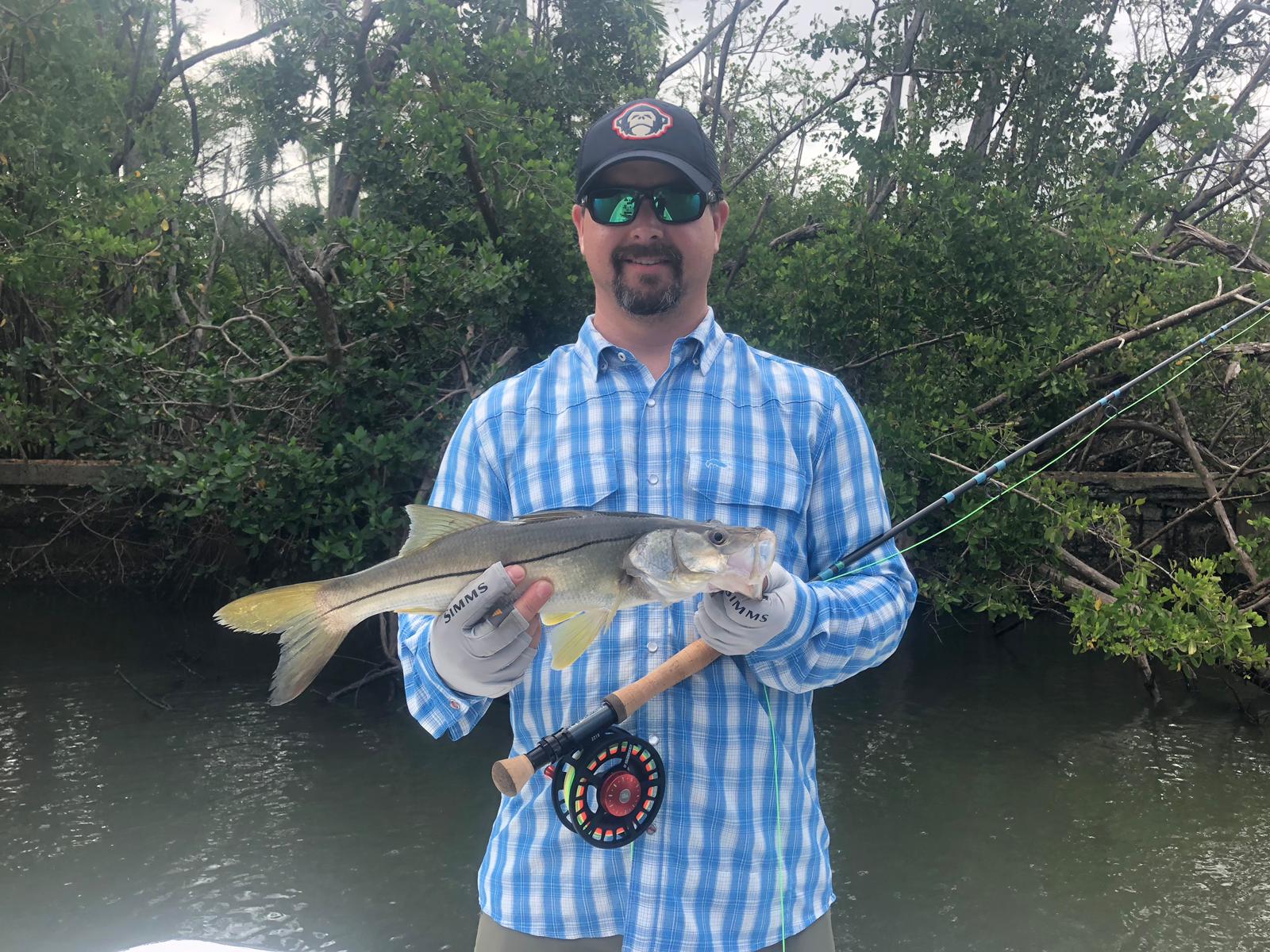
GEAR RECOMMENDATIONS FOR PUERTO RICO FLY FISHING
- Fish species: Tarpon, Snook
- Fishing season: Year Around
- Nearest airport: San Juan Luis Muñoz Marín International Airport or Isla Verde International Airport (IATA: SJU, ICAO: TJSJ)
- Recommended fly fishing leader: 5 to 7.5 foot leader 0X, 1X & 2X
- Recommended fly fishing tippet: Saltwater - 0X
- Best fly fishing rod: 9 to 12 foot – 7, 8, 9, 10, 11, 12 weight
- Best floating fly line: WF Floating Fly Line Saltwater
- Best sinking fly line: Slim Line or Intermediate 10 wt. Line – floating lines 10, 11, 12 wt.
- Fly lines: Floating (Sink tip or slim line for canals, channels, deeper river situations & lakes.)
We Catch Snook Too On Flies, You Never Know What You’ll Land With Our Guides By Your Side On The Ocean Or In The Jungles Of Puerto Rico
LIST OF FLIES FOR PUERTO RICO FLY FISHING TRIP
TARPON STREAMERS
- Cockroach (#3/0) and (#1/0)
- Black Death (#3/0) and (#1/0)
- Tarpon Tapas in Tan/Orange (#1/0) Tan/Brown (#1/0)
- Bigeye Tarpon in Brown (#1/0) Sand Devil (#1/0)
- Tarpon Toad in Chartreuse (#1/0) Purple/Black (#1/0)
- Tarpon Bunny in Orange (#1/0)
- Orange Butt Tarpon (#1/0)
- Tarpon Toad Purple/Black (#1/0)
- Woolly Mullet, gray Grey/Silver/Black (#1/0)
- Tarpon Bunny's Back/Brown/Purple (#1/0)
- Closer Minnow
- Olive/White/Black/Black paradise (#1/0)
- Gummi Minnow
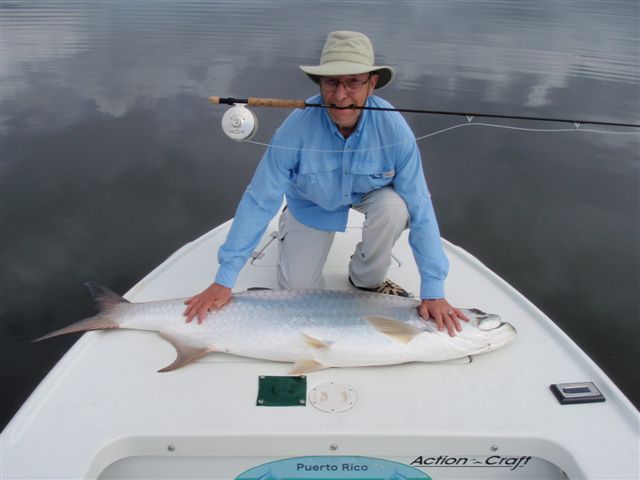
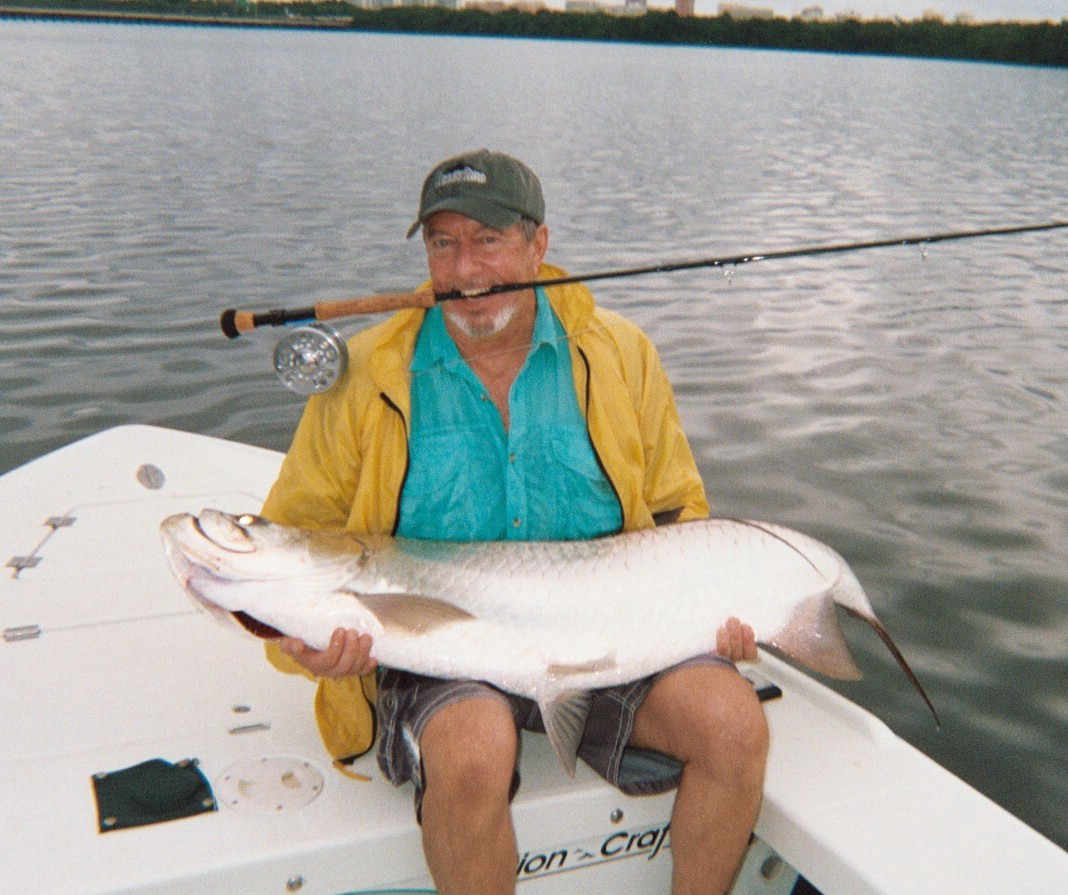
POPPERS
- Large Mouth Yellow
- Large Mouth Orange
- Large Mouth Red
- Large Mouth Black
- Large Mouth White
We are located very close to all locations in San Juan Puerto Rico, most take a taxi down to our marina, please call with any questions you have.
Contact Us: Jack Trout - USA - 530-926-4540 or email us at info@jacktrout.com
#1 Fly Fishing Outfitter on Tripadvisor In The World For Fly Fishing Day Trips. Link
Jack Trout Fly Fishing International
We also provide day trips in Bahamas, Costa Rica, Belize, Cuba, Tortola BVI, Chile, Argentina, Spain, Romania, Bosnia and 33 other countries where you are guided and instructed by very professional fly fishing guides with all the best equipment, boats & vehicles for a fair price with all the gear and flies included.
EQUIPMENT CHECKLIST
JACK TROUT FLY FISHING INTERNATIONAL PUERTO RICO
CLOTHING:
- Flats boots
- Wading booties or sneakers and socks elasticized at the calf
- Hat (s) (long billed, wide brimmed, etc.)
- A good quality pair of Polaroid sunglasses , with straps. Wrap around style gives most complete eye protection.
- Scarf/ Bandanna
- Simms Protective gloves (VERY IMPORTANT)
- Lightweight shirts
- Lightweight long sleeve shirts
- Lightweight shorts
- Lightweight pants
- Sandals
- Tennis shoes
- Rain Jacket
- Bathing suits
- Fishing towel
- Dew Rag
- Face Protection
- Spray Bottle With Water
- Hand Alcohol
- Peets Coffee & Gold Swiss Filter – Non Dairy Creamer
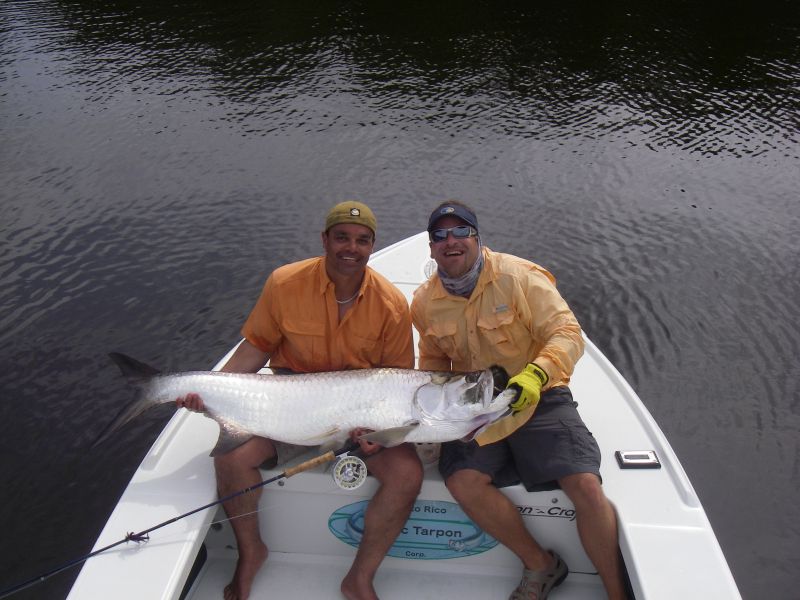
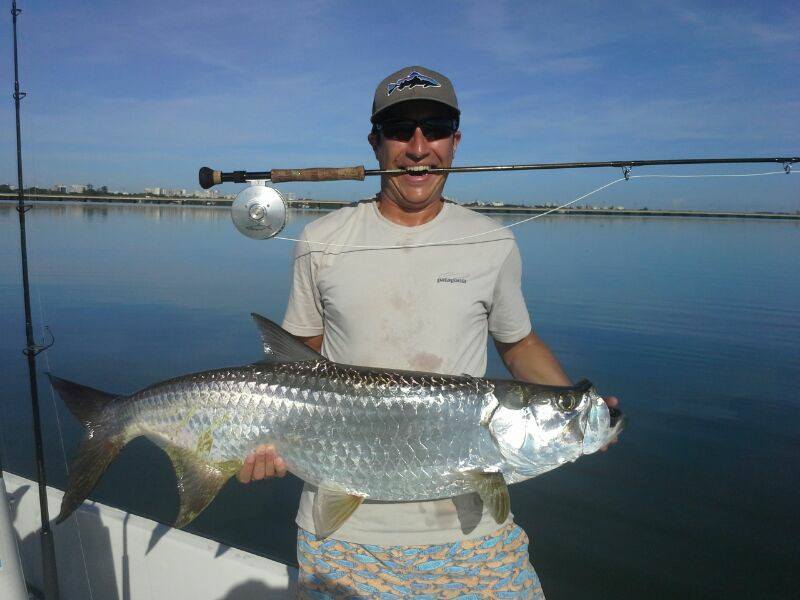
TOOLS:
- Hook hone
- Knot-tying tools
- Waterproof camera
- Large Leatherman / long-nosed pliers
- Swiss Army knife
- Small waterproof flashlight
- Waterproof matches
MISCELLANEOUS:
- Fanny pack
- Water purification tablets
- Water bottles
- Aqua-seal (knot coatings)
MEDICATIONS/ LOTIONS:
- Prescription medications
- First-aid kit
- Sunscreen High factor
- Deet/ insect repellent
- Skin/hand lotion/ moisturizer
SNORKELERS DIVERS:
- Mask, snorkel, fins
- Regulator and Buoyancy Compensator
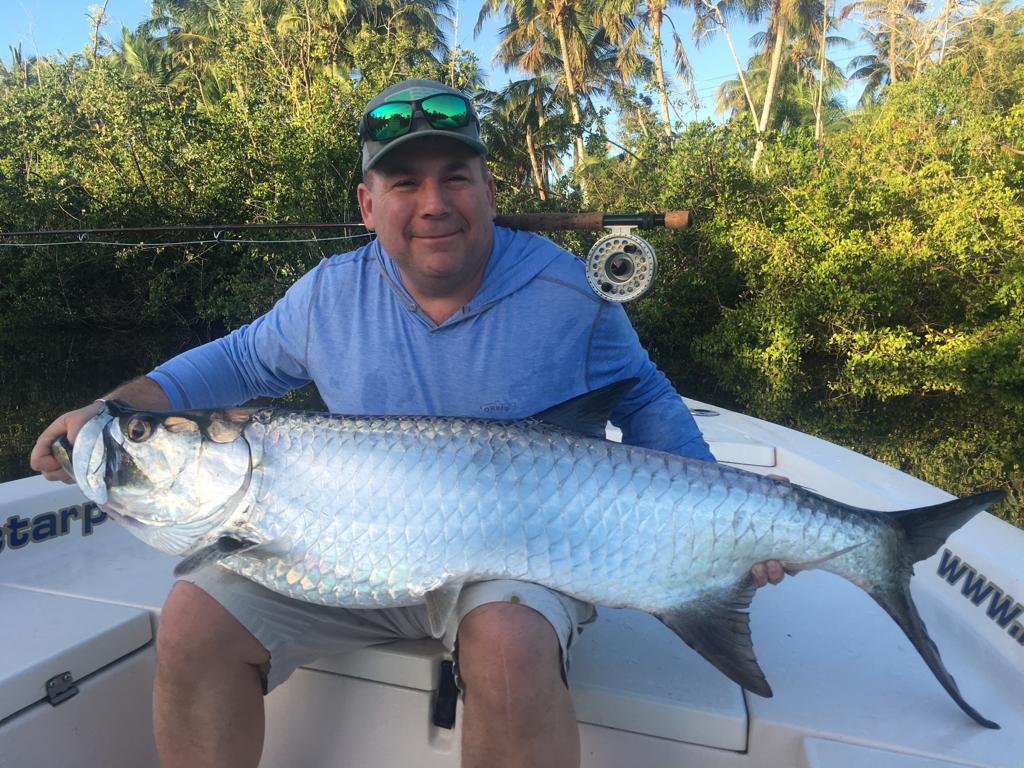
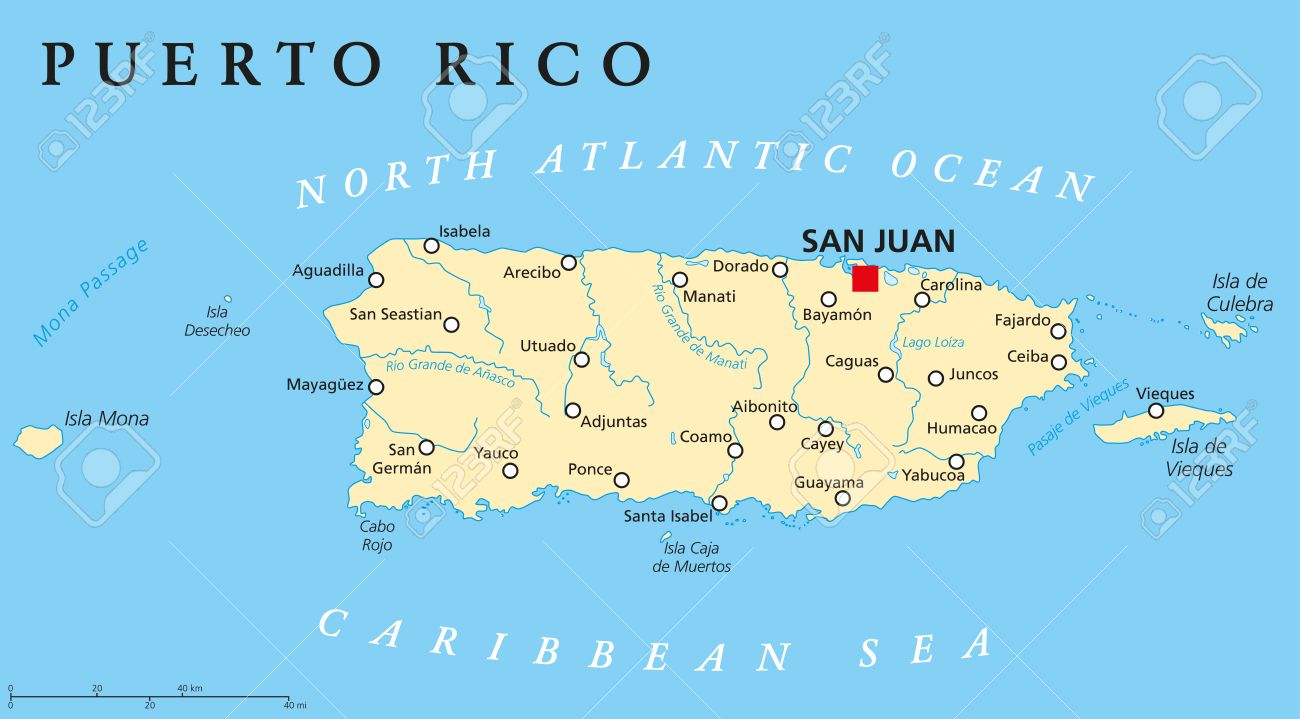
THINGS TO DO BEFORE YOU LEAVE:
- Check to see that your passport is valid for up to 3 months past your date of return.
- Advise post office to hold mail.
- Place valuables in safe deposit box.
- Stop delivery of newspapers, milk etc.
- Buy travelers checks in low denominations (bring approximately $20 in $1 and $5 bills to purchase drinks)
NOTE: There is a service charge made by most businesses in Costa Rica for cashing checks. - Put away all yard equipment and furniture.
- Put address labels on all baggage (inside and out).
- For the purpose of fast identification, please print name and address legibly on your baggage tags, last name first in capital letters.
- Leave extra house key and itinerary with relative or friend.
- Arrange for pets.
- Check with doctor about malaria prevention and other health concerns.
BEFORE YOU LOCK THE DOOR. HAVE YOU:
- Turned off all appliances and taps?
- Closed and locked windows and doors?
DO YOU HAVE: (DO NOT PACK IN YOUR SUITCASE)
- Passport.
- Domestic air tickets.
- Name tag so you can be identified at the airport.
- Travelers checks and money.
- Luggage keys.
- Sunglasses.
- Camera, film, flash, extra batteries, silica gel packets and zip-lock bags for keeping camera, lens, film and binoculars dry and fungal free.
- Prescription medicines required while traveling.
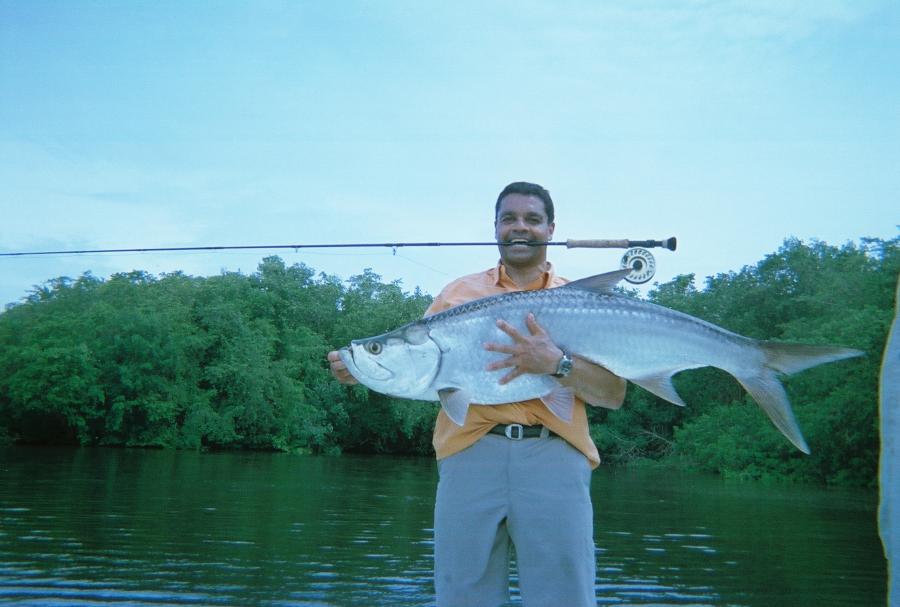
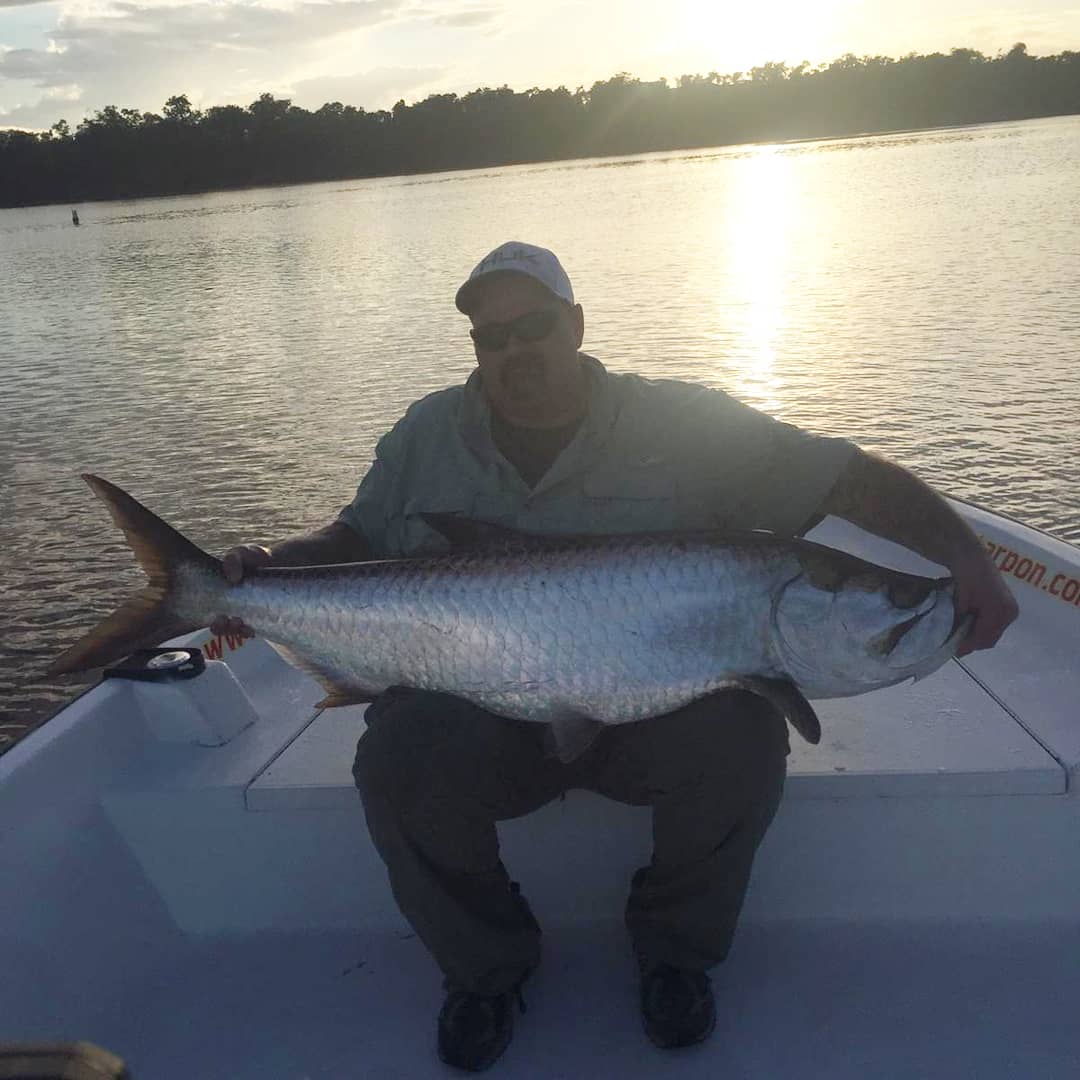
ESSENTIAL THINGS TO TAKE:
- Favorite remedies for headache, colds, upset stomach, including Lomotil or Pepto Bismol (for lower intestinal distress), nerves, insect bites, skin irritations, motion sickness, etc.
- Special medicines and prescriptions including malaria prophylactic.
- Insect repellent.
- Binoculars and field guides.
- Lightweight rain poncho.
- Small flashlight.
- Alarm clock.
- Zip-lock baggies (quart size, and plastic trash bags for wet clothes).
- Hat with brim for sun protection.
- Ballpoint pen and pad. Sunscreen lotion and chapstick (a must in tropical sun). Mask, fins, snorkel.
USEFUL EXTRAS TO MAKE TRAVELING EASIER:
Kleenex mini packs. Wash n' Dry pre-moistened towelettes. Towel for supplemental use and between-hotel swims. First aid kit. Postcard address list. Credit cards. Water bottle. Swiss army knife. Field guides and reference materials. Insurance certificates Address and telephone number of whom to contact in case of emergency.
CLOTHING, EQUIPMENT AND IMPORTANT FACTS:
The items on this list represent everything that you will need on your trip. Since space for baggage is often limited in the field, it is important that you do not bring extra items. Your own experience should help you choose individual items, but don't overestimate the predictability of the weather. On many of our trips you should be prepared for showers and hot sun.
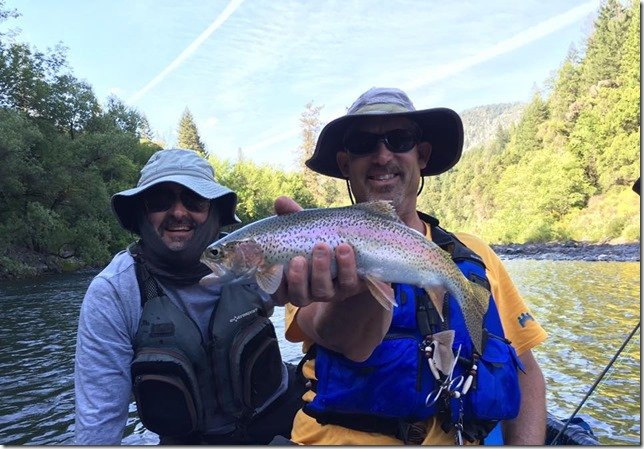
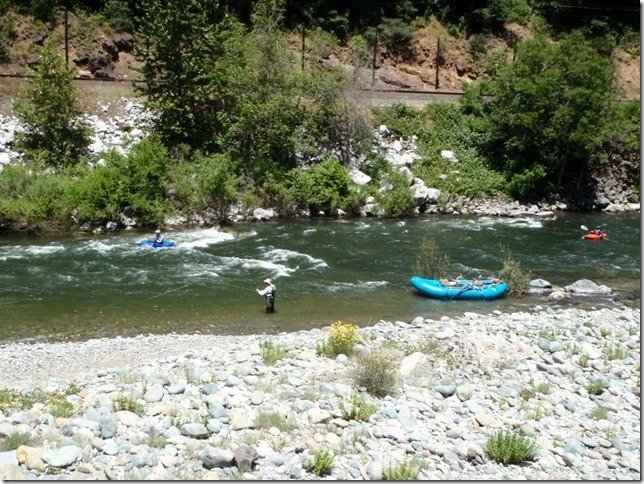
CLOTHING - CASUAL CLOTHES FOR TRAVEL IN CITIES AND AIRPLANES.
- Shirts: Cotton, or light synthetic blend such as those sold by Ex Officio, short-sleeved, or T-shirts; one light long-sleeved
NOTE: Many travelers enjoy purchasing T-shirts throughout their trip and, therefore, pack accordingly. - Trousers: Jeans or light hiking pants. Shorts can be worn in all places except town.
- Underwear: Cotton is comfortable, synthetic blends dry better overnight.
- Headwear: Light hat with wide brim, including back of neck, for sun protection. Tie under the chin is advisable to prevent possible loss due to wind on boats.
- Foul Weather Gear: Poncho - lightweight but sturdy (with any rain garment make sure the seams are sealed). Small folding umbrella can be useful while walking trails or in boats. Light- weight jacket or wind breaker for nights in the mountains or boat rides. A heavy cotton sweat shirt can be substituted for a windbreaker and feels great on the boat after snorkeling.
- Socks: Cotton, athletic.
- Shoes: Trails are often wet and therefore slippery, so your footwear is important. Walking shoes that grip or two pairs of tennis shoes (in case one pair gets wet and muddy). Flip-flops or shower togs.
NOTE: Most landings on islands are wet landings and we recommend always wearing shoes in the field. - Swimsuit: An extra swimsuit may be helpful.
SNORKELING / DIVING
- NOTE: Snorkeling and diving equipment are available for rent. Due to the difficulty in getting a proper fit it is recommended that you bring your own mask and snorkel.
- Mask: Be sure that it fits properly. (Those with mustaches should bring Vaseline.) The best type is the strap-behind-the-heel type worn with dive booties. Flippers should fit properly because blisters can make marine activities very painful.
NOTE: Those who are new to snorkeling may wish only to use tennis shoes for standing up on rocks in the shallows. - Booties: Slip-on rubber dive booties protect from blisters and protect ankles against coral scrapes.
- Snorkel: Many varieties are available. Be sure the mouth piece is comfortable.
- Gloves - Cheap artificial leather or cloth garden gloves.
NOTE: IT IS DESTRUCTIVE TO THE REEF TO HANDLE CORAL, SPONGES, ETC. PLEASE DO NOT TOUCH! - Divers: NOTE: You must have your own dive certification card with you
- Weights and tanks are available for rent.
- Dive light if you are taking a night dive.
- Wet suit jacket or shorty wet suit (optional for those who are cold natured, otherwise use a T-shirt).
- Buoyancy compensator and gauges are required of all divers. Divers should have depth and pressure gauges, watch and knife.
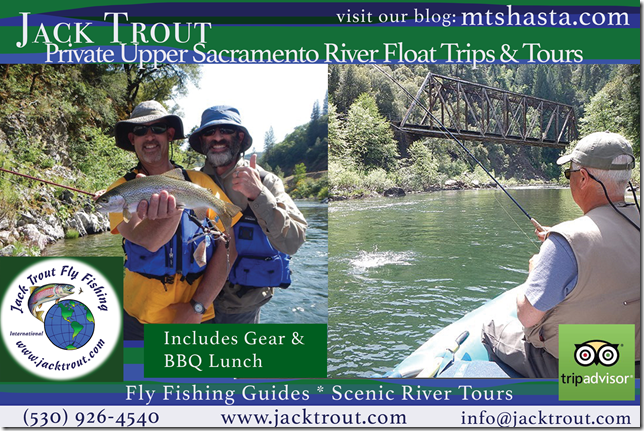
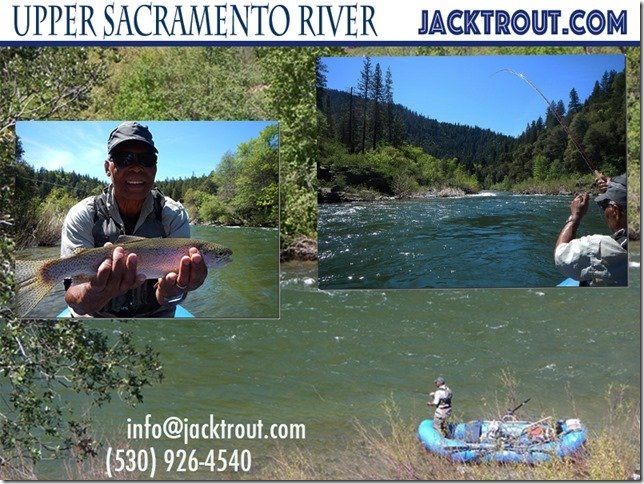
LUGGAGE
Travel light! One medium-sized suitcase or duffle bag and a carry-on bag per person should be adequate. People who make a habit of traveling "light" report relatively trouble-free journeys uncomplicated by several pieces of luggage. Those of you who are taking collecting equipment need to be even more conservative in your packing. We recommend a duffle bag approximately 14" x 30", made of strong, waterproof duck with full zipper and wrap-around nylon type handles, or army surplus duffle. Duffle bags pack more easily and will protect your gear from dust.
ACCESSORIES
- One plastic water bottle (1 quart rapacity, widemouth -- check for leaks). Water will be provided in the vehicles.
- Personal first aid kit (bandaids, aspirin, personal medications, insect repellent, after-bite stick, etc.)
- Toilet Kit (soap, toothbrush, personal toilet articles).
- Disposable towelettes (Wash n' Dries) are useful for personal hygiene.
- 50+ Sun-blocking lotion, 8-15 level Paba (preferably the type that will not easily wash off).
- Flashlight with spare batteries and bulb.
OPTIONAL ACCESSORIES
- Camera: your choice but keep the weight down.
- Bring your cord to transfer pictures to PC, Iphone or tablet.
- Go Pro camera with selfie stick.
- Flash and extra batteries. You will find a lens with macro capabilities most useful.
- Binoculars (new lightweight models are generally excellent).
- Watch (waterproof).
- Reading material, writing material, playing cards.
- Repair kit: needle, thread, buttons, 1/8" nylon cord, ripstop tape, etc.
- Regular sunglasses: spare pair if you wear prescription lenses.
- Stuff bags: various sizes, heavy duty, zip-lock for film, books, and small items; trash bags for wet clothes and dirty shoes.
PACKING
We recommend that you hand carry on the plane in your daypack or hand luggage, camera, important documents, medicines and other irreplaceable items. Make sure they will fit under the seat of the plane or in the overhead compartment. DON' CHECK BAGS THROUGH to an overseas destination from your hometown -- wait until your final domestic gateway city.)
TRAVEL DOCUMENTS
A valid passport is required. Each U.S. citizen must have one. Passports may be applied for at the Post Office in towns of 35,000 to 40,000 population and above. If you live in a smaller community, call the clerk of the Circuit Court in your county seat. He can tell you where to apply for one.
NOTE: Some countries require that your passport be valid for six to twelve months from the day you enter the country. Please contact the embassy for special requirements.
INOCULATIONS AND MEDICATION
There are no inoculations required by the Puerto Rico Government, however, we encourage you to check with the Public Health Department or your physician. Compazine and Lomotil are often recommended. We highly recommend malaria prevention, which usually begins several weeks before departure. Please consult your physician. Also, you should bring a supply of motion sickness remedies if you are prone to sea sickness. The Centers for Disease Control, located in Atlanta, can be reached by dialing (404) 639-1610, (404) 639-3311, or (404) 639-2572.
MONEY
U.S. dollars are accepted everywhere. Travelers checks are accepted in most places. A service charge is usually made by most businesses for cashing these checks. Visa, Mastercard and American Express credit cards are accepted in major hotels. Some hotels will accept one or two of these three cards. ASK! Smaller shops and hotels often do not accept credit cards. American citizens are exempt from any exit taxes in Puerto Rico a United States Province.
USA CURRENCY NO EXCHANGE RATE
NOTE: We cannot overemphasize how important it is for all participants to carry a generous supply of sun screen & bug spray.
READY TO CAST YOUR LINE?
Join us for a fly fishing adventure like no other!
Let's get started!
